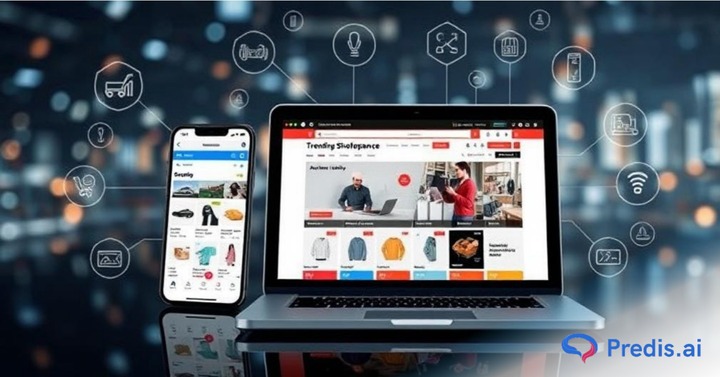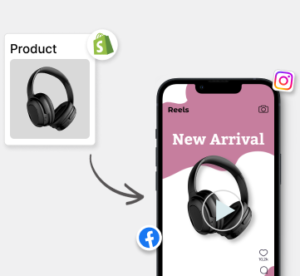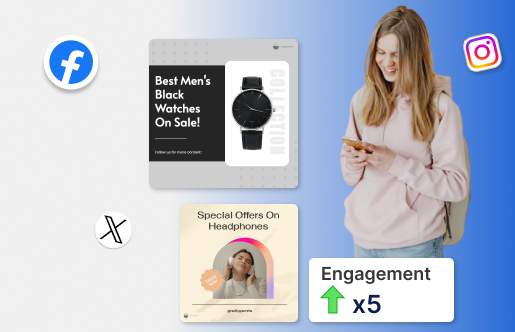Even though physical retail is back in full force, e-commerce is still booming. In fact, analysts project that by 2027, global retail e-commerce sales are expected to surpass over $8 trillion dollars.
While some e-commerce trends and technologies fade into obscurity, others are so potent that they fundamentally alter the direction of the market. Following the emergence of numerous innovations and cutting-edge technologies, global businesses are determining which new trends to follow and how to proceed.
Here are the top 11 significant e-commerce trends that will impact your company in 2024. Let’s explore each of them!
1. High-End Increase of Voice Search
Voice assistants have advanced substantially, now available on mobile devices, home automation centres, and even TV control panels. The rise in the popularity of voice search has a significant effect on search engine results and buying outcomes.
It is anticipated that the total global operations value of voice assistant-enabled smart home device buying will increase to $164 billion in 2025. The rising chances for voice assistants to make purchases through smart home gadgets have led to a growth of over 630% in just five years.
E-commerce sellers need to stay aware of developments in search engine optimization to optimize for subsequent sales. Make sure that your online store is optimized, at the very least, for voice search on smartphones and tablets by giving priority to the details that users request, such as address, phone number, and working hours.
2. Advanced Mobile Shopping Accessories
Furthermore, 40.4% of all e-commerce sales are predicted to come from mobile devices in 2024.
Physical stores might not like it when customers stare at their phone screens because it could mean that they are price-comparing or that they are utilizing their shop as a display room for an online purchase they plan to make later. 91% of consumers use their smartphones to make online purchases.
Far-sighted retailers must provide their GPS-enabled mobile shopping interactions to assist customers with in-store or online purchases. By 2025, mobile commerce is predicted to generate $710 billion in sales. A mobile-friendly website and store are essential components of a satisfying online shopping experience for any seller.
To optimize this experience, investing in ecommerce application development is crucial, allowing retailers to create seamless, user-friendly shopping apps that cater to the needs of mobile shoppers.
3. Sustainable Online Shopping
Consumers are becoming more concerned about sustainability, particularly the effects of eCommerce on ecosystems. Emissions of carbon dioxide (CO2) from goods shipping could reach 25 million metric tonnes by the end of this decade.
Each year, 3% of the world’s greenhouse gas emissions come from shipping. 65% of consumers make an effort to purchase goods with sustainable packaging, and 29% consistently steer clear of plastic packaging. Moreover, 64% of consumers in the US and the UK want fashion brands to employ fewer packaging materials.
These figures indicate that customers want a more environmentally friendly shopping experience than what most stores currently offer. As consumer behavior continues to shift significantly, competent businesses must adjust to remain competitive in the future eCommerce market.
Use Predis.ai's Ecommerce Social Media Post Maker to create compelling social media posts for your ecommerce store with ease. Transform your ecommerce social media strategy with visually stunning posts to boost engagement and sales.
4. Expansion of Subscription Business Models
Selling a subscription increases the likelihood that the client will come back time and again. Online subscription models have shown to be effective, and a lot of sensible companies are coming up with innovative ways to convert goods and services into long-term agreements that will keep clients coming back for months or even years.
It should come as no surprise that the subscription market is expected to reach over $2 trillion by 2028, growing at a 71% CAGR.
Keep in mind that achieving subscriptions necessitates a long-term perspective, careful monitoring of unit costs, technology utilization, and the shift from “consumer assistance” to “consumer achievement.”
5. Cross-selling and Up-selling with AI assistance
Artificial intelligence (AI) and predictive modeling are useful tools for predicting potential purchase behavior by considering a consumer’s surfing and buying behavior.
AI is capable of tailoring a website for each visitor. Existing customers account for 65% of a company’s revenue, highlighting cross-selling opportunities.
Certain ERP and CRM systems have algorithms for machine learning to help with cross-selling and up selling, even though only a few sellers have the data required for accurate AI. To support seamless communication and efficient customer engagement during the buying journey, integrating AI voice agent services for businesses can be a game changer. They help e-commerce sellers manage inbound and outbound calls efficiently, offering real-time customer support and assisting sales teams in capitalizing on cross-selling and up selling opportunities by connecting with customers directly.
6. Personalized Retail Experiments
For years, personalization has been a popular term in marketing. It refers to the process of creating customized marketing messages and exposure for each customer. Personalized tools are purchased by 79% of retail businesses, which is higher than other sectors.
77% of consumers have opted for, advocated for, or increased their spending on a brand that offers personalized service or experiences.
Anticipate even more individualized product suggestions, advertising campaigns, and e-commerce site events in 2024. Businesses must gather and examine more consumer data to comply with this. However, the benefits will be worthwhile, shoppers could receive hyper-personalized offers, such as exclusive deals on Swarovski earrings tailored to their preferences and browsing history.
For example, shoppers can locate the items they are most intrigued by with the assistance of personalized product recommendations. Customized promotional emails have the potential to increase conversions and participation.
Make sure each encounter with the consumer feels specially designed. This pertains to omnichannel experiences throughout both offline and online channels for current and prospective clients.
7. Increase in Short-Form Videos
One of the most captivating types of content is video, and e-commerce companies are starting to realize how crucial it is. Woosuite and LinkedIn predict that the amount of revenue made from short-form video ads will exceed $10 billion.
Create stunning ecommerce videos effortlessly with Predis.ai’s Ecommerce Video Maker. Make scroll stopping social media product videos in a few clicks and improve your social media presence, convert more customers.
Produce additional video content in 2024, including behind-the-scenes videos, consumer endorsements, and product presentations. Post your videos on your web page and social media.
Short-form videos are an efficient way to grab the audience’s interest and present insights in an eye-catching way. Thus, it is understood that short-form video platforms—like Instagram Reels and TikTok—are developing into effective instruments for informing consumers and swaying their opinions.
8. Virtual and Augmented Reality
With a ten-year compound annual growth rate (CAGR) of 41.1%, the AR/VR market is projected to reach $856.2 billion by 2031.
The actual, real-life environment is combined with digitally produced images, sounds, or other sensory input to create augmented reality (AR). In contrast, virtual reality (VR) is a simulation that uses a special headset to immerse the user in an artificially created setting that appears real.
To provide a more engaging buying experience, many eCommerce brands are implementing AR and VR technologies.
The responses from customers are overwhelmingly favorable. 71% said they would purchase more from a company like a VR arcade using augmented reality. Businesses that use AR/VR content have a 94% higher conversion rate, according to another study.
Among the businesses pioneering augmented reality is IKEA. In a virtual kitchen, users can learn and engage by blending dough and cooking pancakes. IKEA is investigating how virtual reality can impart information regarding home furnishings.
9. Swifter Distribution Channels and New Markets
Huge trading platforms from retail giants like Costco Wholesale Corporation and Kroger Co. can serve as a blessing and a curse for less extensive e-commerce businesses.
They give marketers an innovative method of reaching an extensive customer base through dissemination but simultaneously subject them to the additional costs and imposed restrictions that come with contending in a rival business’s marketplace.
However, it appears that this trend will only continue to grow. Whether they specialize in fashion, electronics, or building materials eCommerce, they should consider whether those marketplaces are appropriate for their products and strategies to outplay the big players.
Boost Sales on Social Media with AI ⚡️
TRY NOW10. Customer Relationship Management
Customer relationship management, or CRM, includes tools and techniques for managing customer interactions. E-commerce companies use CRM and given that 92% of clients will leave a business after a couple of unfavorable interactions, having a strong CRM strategy is crucial.
CRM helps business owners comprehend the requirements and behavior of their clients. This promotes ties between parties and the development of a devoted clientele.
The CRM market is projected to reach about $157.53 billion by 2030. Furthermore, more than 91% of businesses use CRM, and more than 11 staff members use it to handle customer inquiries.
Reward and incentive programs are great CRM tactics. 75% of consumers prefer businesses that provide rewards. Additionally, these programs increase profits by 25% to 95% while boosting retention rates by 5%.
11. Rise of User-generated Content
User-generated content (UGC) can greatly increase sales and brand loyalty by giving a brand’s marketing initiatives more legitimacy, reliability, and social validation.
According to one study, shoppers who engage with user-generated content see a 29% increase in leads compared to those who don’t. Before making a purchase, the majority of consumers want to read reviews and comments. User-generated content (UGC) adds value by presenting the thoughts and experiences of actual customers.
User-generated content also fragments advanced product photography and common product descriptions. For instance, it can demonstrate how to wear a piece of apparel or how it will fit different body shapes. User-generated videos go one step further by emphasizing the qualities and abilities of more sophisticated goods, such as electronic appliances.
Takeaway
Adhering to the most recent developments in the e-commerce sector does not entail copying ideas for your own company or hurriedly introducing new e-commerce technologies.
Instead, it should focus on staying current with changing customer demands. This will enable you to sustain a profitable business while giving your customers a more fulfilling shopping experience.
These are the top 11 significant e-commerce trends that will impact your company’s online shopping in 2024.
Social media marketing in the form of short-form videos, reels, and posts is one of the ongoing top e-commerce trends in 2024 and beyond.
Hence, if you are looking for ways to amp up your e-commerce social media presence, head out to Predis.ai.
Predis.ai uses key specifications about your brand products and employs your brand colors to add authenticity for generating appealing videos and other social media posts.

⭐️⭐️⭐️⭐️⭐️
“Great App! Would Recommend to anyone looking to boost their social media posts.”
Related Content,
Social Proof for E-Commerce What is it & How to Add It to Squarespace Store


















